Home Plate
These were Our homes away from home
HS-6 was deployed aboard many different aircraft carriers over the years. They ranged from Essex class carriers built during WWII, to a LPH, to Forrestal and Kitty Hawk class coventionally-powered carriers to the most current Nimitz class super carriers. The entries below show only the carriers we deployed on, but not other aviation capable ships we occasionally operated from.
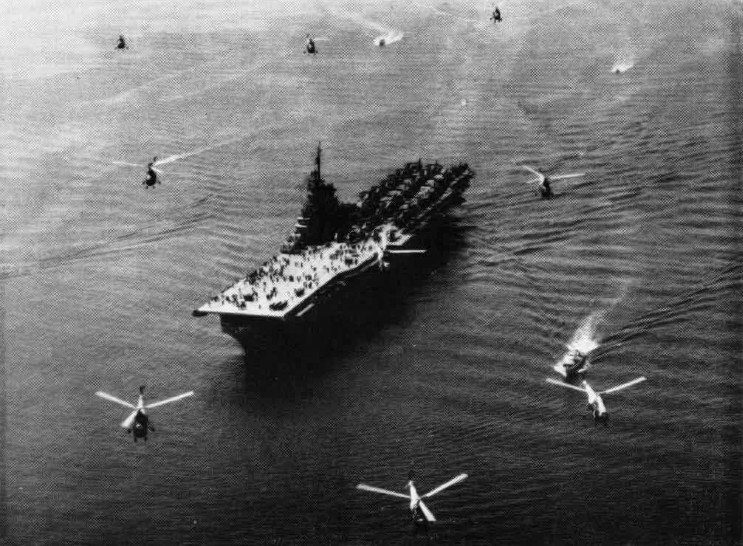
USS Princeton (CVS-37)
Helicopter Antisubmarine Squadron Six was commissioned on 1 June, 1956, aboard the USS Princeton (CVS-37). The Princeton was commissioned in November 1945, too late to serve in World War II, but saw extensive service in the Korean War, in which she earned eight battle stars, and lastly during the Vietnam War. She was reclassified in the early 1950s as an attack carrier (CVA), then as an Antisubmarine Aircraft Carrier (CVS), and finally as an amphibious assault ship (LPH), carrying helicopters and marines. She was scrapped in 1971. Princeton remained a straight-deck carrier throughout her existence. – Wikipedia
USS Philippine Sea (CVS-47)
USS Philippine Sea (CV/CVA/CVS-47, AVT-11) was one of 24 Essex-class aircraft carriers of the United States Navy, and the first ship to be named for the Battle of the Philippine Sea. She was launched on 5 September 1945, after the end of World War II. She was sent to the Korean Peninsula at the outbreak of the Korean War. Philippine Sea saw three tours to Korea during the war, receiving nine battle stars for her service. For the remainder of her service, she operated primarily out of San Diego and San Francisco, seeing several deployments to the Far East and being redesignated an anti-submarine warfare carrier. She was decommissioned on 28 December 1958 and sold for scrap in 1970. – Wikipedia


USS Kearsarge (CVS-33)
USS Kearsarge (CV/CVA/CVS-33) was an Essex-class aircraft carrier completed shortly after World War II. The ship was the third US Navy ship to bear the name, and was named for a Civil War-era steam sloop. Kearsarge was commissioned in March 1946. Modernized in the early 1950s as an attack carrier (CVA), she served in the Korean War, for which she earned two battle stars. In the late 1950s she was further modified to become an anti-submarine carrier (CVS). Kearsarge was the recovery ship for the last two manned Project Mercury space missions in 1962–1963. She completed her career serving in the Vietnam War, earning five battle stars. She was decommissioned in 1970 and sold for scrap in 1974. – Wikipedia
USS Ticonderoga (CV/CVA -14)
USS Ticonderoga (CV/CVA/CVS-14) was built during World War II for the United States Navy. Ticonderoga was commissioned in May 1944, and served in several campaigns in the Pacific Theater of Operations, surviving several kamikaze attacks. Decommissioned shortly after the end of the war, she was modernized and recommissioned in the early 1950s as an attack carrier (CVA), and then eventually became an antisubmarine carrier (CVS). She was recommissioned too late to participate in the Korean War, but was very active in the Vietnam War. Ticonderoga was decommissioned in 1973 and sold for scrap in 1975.
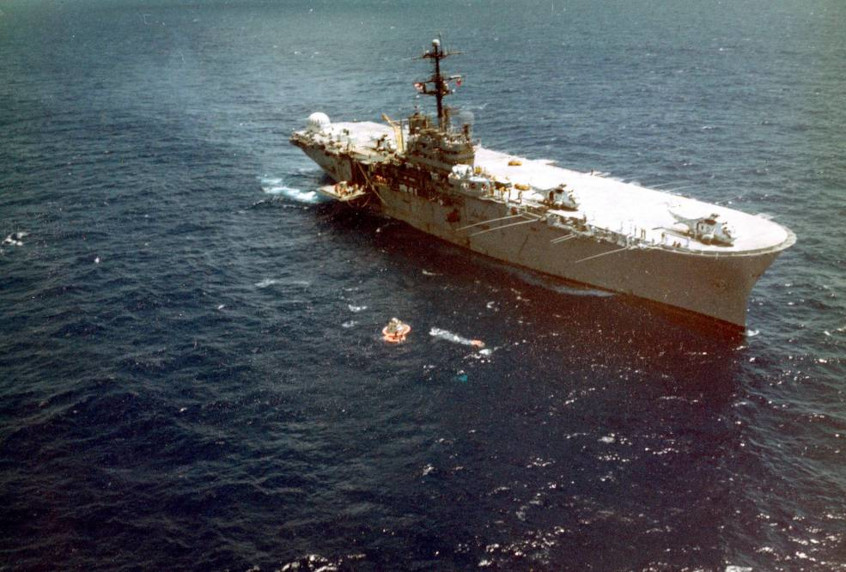
USS New Orleans (LPH-11)
USS New Orleans (LPH-11) was an Iwo Jima-class amphibious assault ship and named for the Battle of New Orleans. She was launched in February 1968. New Orleans made her first appearance in the Western Pacific in August 1969 as flagship for Amphibious Ready Group Bravo. In February 1971, she picked up astronauts Alan Shepard, Stuart Roosa, and Edgar Mitchell some 900 miles south of American Samoa. New Orleans was decommissioned in October 1997. She was mothballed in Suisun Bay, California. In 2006, the ship was relocated to Pearl Harbor to be prepared for a ‘SINKEX’. In February 2008, New Orleans was listed for scrapping, instead of sinking. Finally, New Orleans was sunk on 10 July 2010 during the RIMPAC 2010 exercise.
USS Independence (CVA/CV-62
The USS Independence (CV/CVA-62) was the final member of the Forrestal class of conventionally powered carriers. She entered service in 1959, and spent her early years in the Mediterranean Fleet. In September 1971, the crew earned the designation as ‘Blue Nose’ sailors when the Independence crossed the Arctic Circle. During subsequent operations in the North Sea, Independence conducted cross-deck operations with the British aircraft carrier HMS Ark Royal and transited the English Channel en route to scheduled operations in the Mediterranean Sea. Independence was decommissioned in 1998 and stored at Puget Sound Naval Shipyard, Bremerton, Washington. The ex-Independence was towed to Brownsville, Texas for scrapping in 2017 and was dismantled completely by early 2019. – Wikipedia
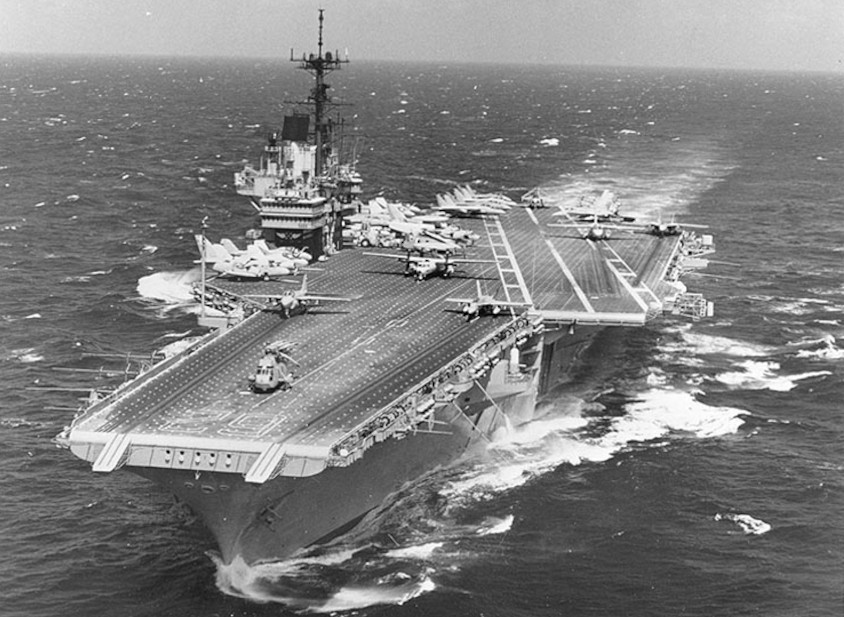

USS Constellation (CVA/CV-64)
USS Constellation (CV-64), was a Kitty Hawk-class supercarrier. She was in the final stages of construction at the Brooklyn Navy Yard in New York when a fire began causing heavy damage. She was christened and launched 8 October 1960. Constellation was on Yankee Station in 1964 at the beginning of combat operations in Vietnam and on station again in January 1973, when hostilities ended. With the end of hostilities Constellation returned to CONUS, had a nine-month workup cycle, and departed in 1974 for her first peacetime deployment in 10 years. In November, she became the first carrier to enter the Persian Gulf since 1949. The six-month cruise ended on 24 December 1974. – Wikipedia
USS Enterprise (CVAN/CVN-65)
USS Enterprise (CVA[N]/CVN-65), was the first nuclear-powered aircraft carrier. Like her predecessor of World War II fame, she is nicknamed “Big E”. The only ship of her class, Enterprise was, at the time of inactivation, the third-oldest commissioned vessel in the United States Navy after the wooden-hulled USS Constitution and USS Pueblo. On 28 April 1986, Enterprise became the first nuclear-powered aircraft carrier to transit the Suez Canal. She was inactivated in December 2012, and officially decommissioned in February 2017, after over 55 years of service. The name has been adopted by the future Gerald R. Ford-class aircraft carrier USS Enterprise (CVN-80). – Wikipedia
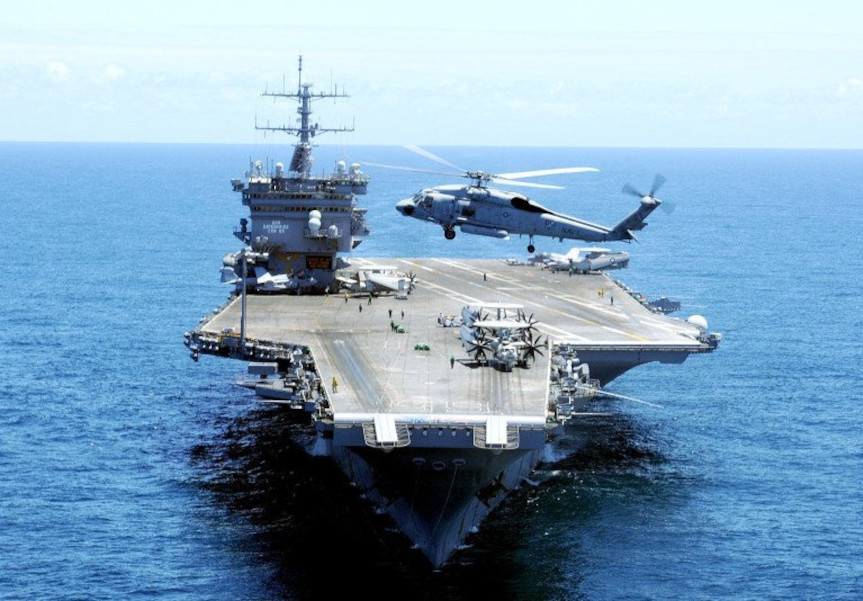

USS Abraham Lincoln (CVN-72)
USS Abraham Lincoln (CVN-72) is the fifth Nimitz-class aircraft carrier. She was commissioned in 1989 in Norfolk, VA, and transferred to the Pacific Fleet in 1990. Abraham Lincoln‘s maiden Western Pacific deployment came unexpectedly on 28 May 1991 in response to Operation Desert Shield/Desert Storm. In October 1993, the carrier was ordered to the coast of Somalia to assist UN humanitarian operations. For four weeks, Abraham Lincoln flew air patrols over Mogadishu in support of Operation Restore Hope. Abraham Lincoln was to be the first Pacific Fleet carrier to integrate female aviators into the crew after the Combat Exclusion Laws were lifted in 1993. i Wikipedia
USS Kitty Hawk (CVA/CV-63)
USS Kitty Hawk (CVA/CV-63) was the first of the three Kitty Hawk-class aircraft carriers to be commissioned. Kitty Hawk was built in Camden, NJ. Launched in May 1960, she was launched by flooding her drydock; the conventional slide down method was ruled out because of her mass and the risk that she might hit the Philadelphia shore on the far side of the Delaware River. For 10 years, Kitty Hawk was the forward-deployed carrier at Yokosuka Naval Base in Japan. In October 2008 Kitty Hawk returned to the United States for decommissioning. She was the USN’s last oil-powered aircraft carrier. She was officially decommissioned in May 2009 after almost 49 years of service. She was stricken from the Naval Vessel Register in October 2017, and will be dismantled. – Wikipedia
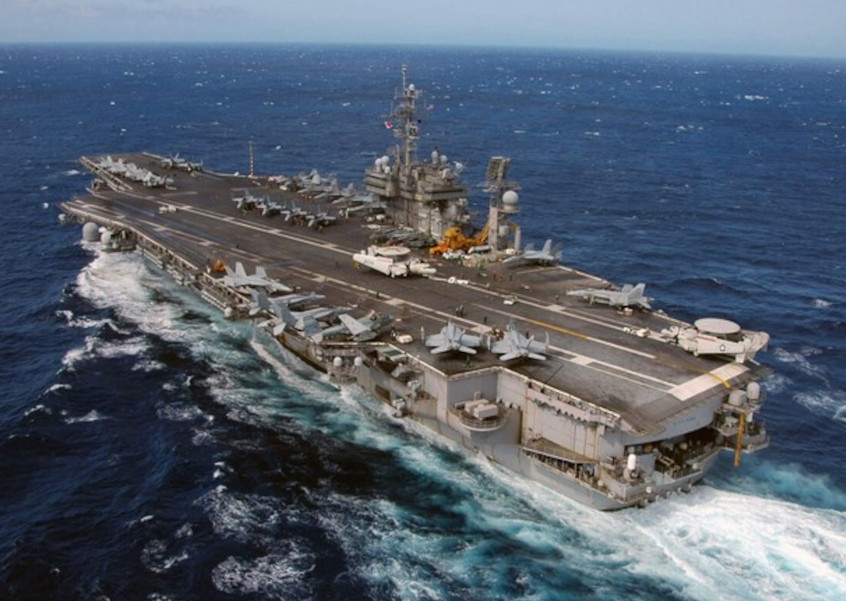
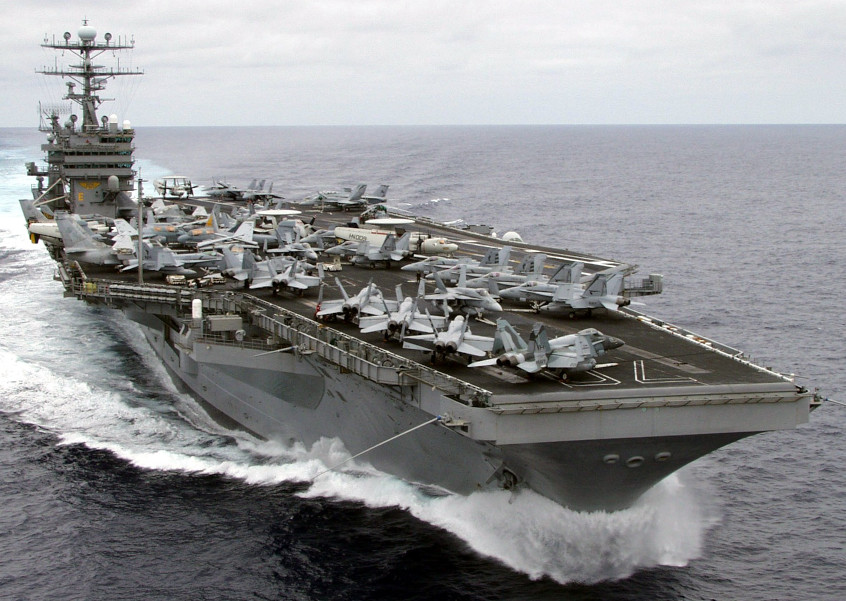
USS Carl vinson (CVN-70)
USS Carl Vinson (CVN-70) is the third Nimitz-class supercarrier. The ship was launched in 1980 and made her maiden voyage in 1983. In 1998 the ship participated in RIMPAC ’98, then departed for the Persian Gulf, in support of Operation Desert Fox and Operation Southern Watch, conducting air strikes into March 1999. In July 2001, Carl Vinson was bound for the Persian Gulf to support Operation Southern Watch. This changed on 11 September. On 7 October 2001, Carl Vinson launched the first airstrikes in support of Operation Enduring Freedom. For 72 days, Carl Vinson launched over 4,000 combat sorties. In mid-December, Carl Vinson began the return trip home, arriving there in January 2002. The body of Osama bin Laden was buried at sea in 2011 from the deck of Carl Vinson.
USS Ronald Reagan (CVN-76)
USS Ronald Reagan (CVN-76) is the 9th Nimitz-class powered supercarrier. She was built at Newport News Shipbuilding in Newport News, Virginia, and was commissioned in July 2003. In May 2004 Ronald Reagan, with HS-6 embarked as a component of CAW-11, began her transit from Naval Station Norfolk through the straits of Magellan to her new homeport of Naval Air Station North Island. Ronald Reagan made five deployments to the Pacific and Middle East between 2006 and 2011 while based at Naval Air Station North Island. In October 2015, Ronald Reagan replaced USS George Washington as the flagship of Carrier Strike Group Five, the only forward-based carrier strike group home-ported at Yokosuka, Japan, as part of the United States Seventh Fleet.
